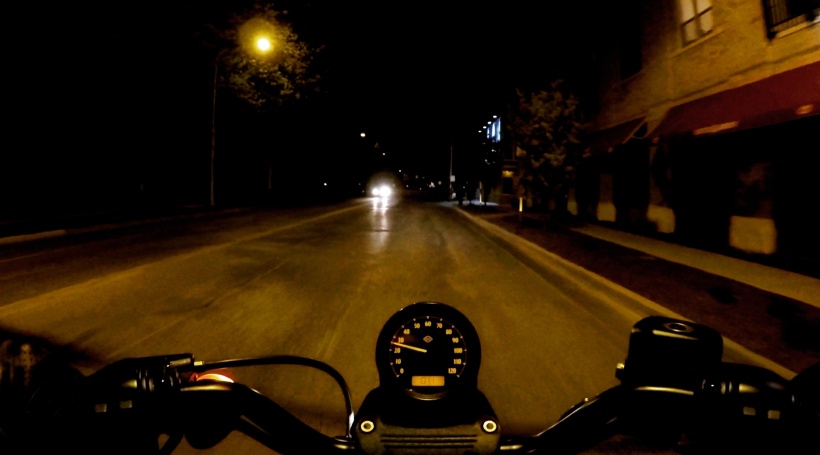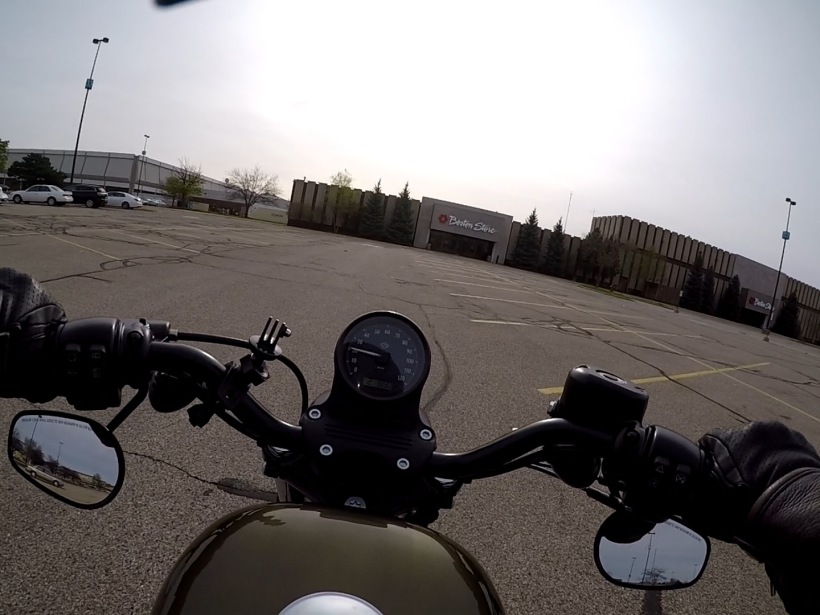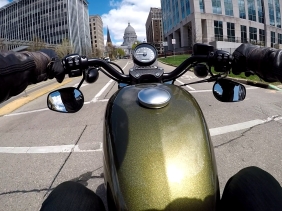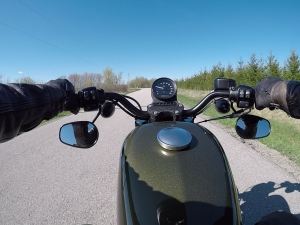I’ve now been a motorcyclist for 10 short weeks. It seems so much longer than that. That’s likely because I’ve put 2500 miles on my Harley Iron 883 in just over two months. In that time I feel I’ve become quite good at it. My counter steering, corning, and escaping the dangers of traffic abilities have vastly improved. Hell, even my waving-at-little-kids-saying-hello abilities are top notch:
https://www.instagram.com/p/BVN_BekFz3O
I’ve had a lot of fun on my Iron 883 and I’ll write about more adventures on it, especially after I get a sissy bar put on it so I can strap camping equipment on it. But it;s time to write about a two wheeled adventure on my touring bicycle.
Anyone that will listen while I talk cycling, I’ll tell them that the bicycle has been the solution to every conundrum I’ve had. Soon I’ll write a blog post of all the many ways this is true, but in this post I’ll focus on how the bicycle is the very best stress reliever.
Anytime I get a little bit stressed out, pedaling helps sort out the shit in my head. Stress was a bit high these last few weeks, so I decided to ride my bike to Galena, IL and back. Round trip mileage was just shy of 200 miles. About 80 miles of the ride was on gravel or dirt. About 40 while riding on the Badger State Trail on the way to Galena and 40 miles on the Military Ridge State Trail on the way back.
 Galena and a good portion of southwestern Wisconsin are in the Driftless Region. This is a very hilly area that the glaciers didn’t touch during the last Ice Age nearly 12,000 years ago. This means it’s a shit-ton of fun to ride on two wheels. I chose Galena because it’s at the base of the Driftless Region and my route from Madison takes me right through some of the more challenging hills.
Galena and a good portion of southwestern Wisconsin are in the Driftless Region. This is a very hilly area that the glaciers didn’t touch during the last Ice Age nearly 12,000 years ago. This means it’s a shit-ton of fun to ride on two wheels. I chose Galena because it’s at the base of the Driftless Region and my route from Madison takes me right through some of the more challenging hills.
I love Galena. It’s cityscape is architecturally gorgeous. If you are an admirer of architecture, head to downtown Galena to see some of the best preserved Greek Revival building built in the mid-19th century or head to the north bluffs to see some amazing 19th century Victorian mansions. 85 percent of the structures in Galena are in the Historic District and are preserved by the National Registry of Historic Places. Main St is filled with touristy antique and clothing shops that has just the right amount of kitsch. Not overwhelming and just enough to be cute. The beauty of the city and municipal efforts to preserve it help keep the city charming.
On the 105-mile ride home, my top elevation was 1276 ft. This was about 10 miles northeast of Mineral Point, WI. Sure, compared to the eye-popping size of the Rockies or even the elevation of the rolling mountains of the Smokies, but cycling the rolling hills of the Driftless is no easy task. Many climbs had grades in the 7-8% range and a few can be as high as 11%. I was challenged last summer when I climbed the Cascades in Washington State. The climb up Rainy and Washington passes had a 5-7% grade. This is over 40 miles, so yes, very challenging. But in my opinion the steep grades of the Driftless are much more challenge over a 100-mile ride.
 Going downhill is even more fun. One skill on the motorcycle that I use to effectively hold my line in a tight curve is counter steering. Instead of breaking and slowing while going down many of the long, steep hills in the driftless, I held my line and sped up while counter steering my Specialized AWOL. I sped down hills faster and held my line more effectively than before I learned to ride my motorcycle. I was going 40 mph downhill on a fully loaded touring bicycle. Each faster twist and turn put a bigger smile on my face and with each mph faster the stress melted away.
Going downhill is even more fun. One skill on the motorcycle that I use to effectively hold my line in a tight curve is counter steering. Instead of breaking and slowing while going down many of the long, steep hills in the driftless, I held my line and sped up while counter steering my Specialized AWOL. I sped down hills faster and held my line more effectively than before I learned to ride my motorcycle. I was going 40 mph downhill on a fully loaded touring bicycle. Each faster twist and turn put a bigger smile on my face and with each mph faster the stress melted away.
 I haven’t yet made the trip to Galena by motorcycle, but before the summer ends and the days get too short for a long ride, I’ll make the 100-mile ride on my Harley Iron 883. Possibly an autumn leaf-peeping trip for some throttle therapy to melt away some stress.
I haven’t yet made the trip to Galena by motorcycle, but before the summer ends and the days get too short for a long ride, I’ll make the 100-mile ride on my Harley Iron 883. Possibly an autumn leaf-peeping trip for some throttle therapy to melt away some stress.








